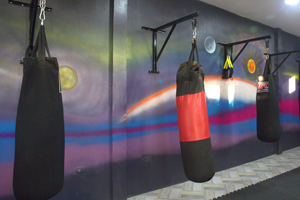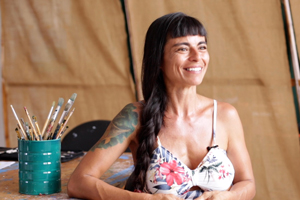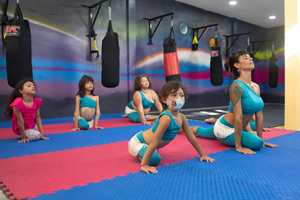Filling the Gaps
Important services can be difficult to get in the middle of the Pacific. Meet the educators providing resources that San Cristóbal schools can’t.
Filling the Gaps
Important services can be difficult to get in the middle of the Pacific. Meet the educators providing resources that San Cristóbal schools can’t.
REPORTER
Kate Slate
PHOTO
Chase Cofield
VIDEO
Angelica Edwards
J’sha Gift
INTERACTIVE
Jacob Turner
Andrés Játiva lives with his mother, Bella Plaza, on the second floor of a dated municipal building in the Galápagos. While Plaza has only ever known life on San Cristóbal, living alongside blue water and sharing the island with wildlife, it lacks the educational accommodations her son needed throughout his youth.
Játiva, now 28, was diagnosed with Down syndrome when he was 3 weeks old. As he grew and attended school on the island, his mother knew the opportunities available to him were limited. Young people with developmental impairments spend most of their time at home, according to Plaza. It takes only an outsider like myself, a foreign visitor, to understand why.
Storefronts are small, with just enough room for two legs to stride between aisles of food. Few ramps can be seen throughout the island and the one I could see has a staircase people must ascend in order to reach it. The island is designed for typical-developing Galapagueños.
“For me this is the best place in the world where, maybe you don’t have access to everything, but you have a healthy life,” said Plaza.
REPORTER Kate Slate
PHOTO Chase Cofield
VIDEO Angelica Edwards | J’sha Gift
INTERACTIVE Jacob Turner
Andrés Játiva lives with his mother, Bella Plaza, on the second floor of a dated municipal building in the Galápagos. While Plaza has only ever known life on San Cristóbal, living alongside blue water and sharing the island with wildlife, it lacks the educational accommodations her son needed throughout his youth.
Játiva, now 28, was diagnosed with Down syndrome when he was 3 weeks old. As he grew and attended school on the island, his mother knew the opportunities available to him were limited. Young people with developmental impairments spend most of their time at home, according to Plaza. It takes only an outsider like myself, a foreign visitor, to understand why.
Storefronts are small, with just enough room for two legs to stride between aisles of food. Few ramps can be seen throughout the island and the one I could see has a staircase people must ascend in order to reach it. The island is designed for typical-developing Galapagueños.
“For me this is the best place in the world where, maybe you don’t have access to everything, but you have a healthy life,” said Plaza.
A healthy life came at the expense of educational resources for Játiva throughout his childhood. On holidays like World Down Syndrome Day and International Day of Persons with Disabilities, Játiva was a spectacle for able-bodied locals, giving a face to the disability. The rest of the year, however, he lived within the island’s peripheral vision, particularly at school.
“He was never, ever going to go on par with the others,” said Plaza. “And the teachers here, the vast majority, are lazy. They don’t like to take care of a special child. Why? Because a special child means more work.”
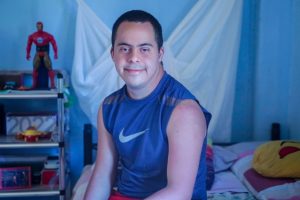

(L) Andrés Játiva and his mother Bella Plaza (R) have struggled to find adequate special education anywhere in Ecuador including on San Cristóbal
Ecuador’s Ministry of Education did not design schools on the island for students like Játiva, in need of additional support from teachers to comprehend course material. Local educators have since taken it upon themselves to make accommodations, but for Játiva the situation was dire.
Plaza felt her son’s trajectory was limited. She and Játiva moved to mainland Ecuador in 2008 after realizing educators on the island weren’t providing him a fair shot.
“I had to look for a specialized private education [on the mainland] in order for Andrés to be prepared for life,” said Plaza.
“I know he’s not going to be an architect, or a doctor, or a lawyer, but I wanted him to be ready for life.”
Following the four years he studied in Quito, Játiva and his mother returned home to San Cristóbal to an educational landscape that hadn’t changed much since they left. This was compounded by a school environment consisting of drugs and mischievous behavior Plaza wanted Játiva away from. Once more, they were forced to leave the place they wanted to call home. They headed for Guayaquil.
There, Játiva completed his Bachillerato, regarded as the Spanish equivalent of a high school diploma. He did this through a mixed-learning method. Játiva attended school on campus two days a week and stayed at home the remaining days to work on modified material. Today, the proper education Játiva received in Guayaquil allows him to live autonomously in San Cristóbal, a privilege many like him are not afforded.
Plaza is one of many on San Cristóbal filling the gaps of the island’s educational system. These gaps aren’t specific to the Galápagos; in fact, they echo issues found in any corner of the world if you look close enough. However, they reflect educational shortcomings that older generations on the island recognize as their mission to fill. Artists and alternative educators have challenged who a traditional education caters to and what it ought to provide.
Their answer? Provide it themselves.
Mind Over Matter
In March 2020, when the pandemic sent students around the world home from the classroom, kids in Ecuador were enjoying their equivalent of summer break. Fernando Mendoza García, student coordinator at a public high school on the island, Ignacio Hernandez, understood the implications pandemic life would have on a student body.
“We have around 250 students, a fairly small population,” said Mendoza García. “But this population is also very significant for us because it practically allows us to work in a personalized way with students.”
A small student-teacher ratio allowed Mendoza García to step into a role where there previously was none: emotional support.
The pandemic waned student attendance. Why weren’t students showing up for online school?
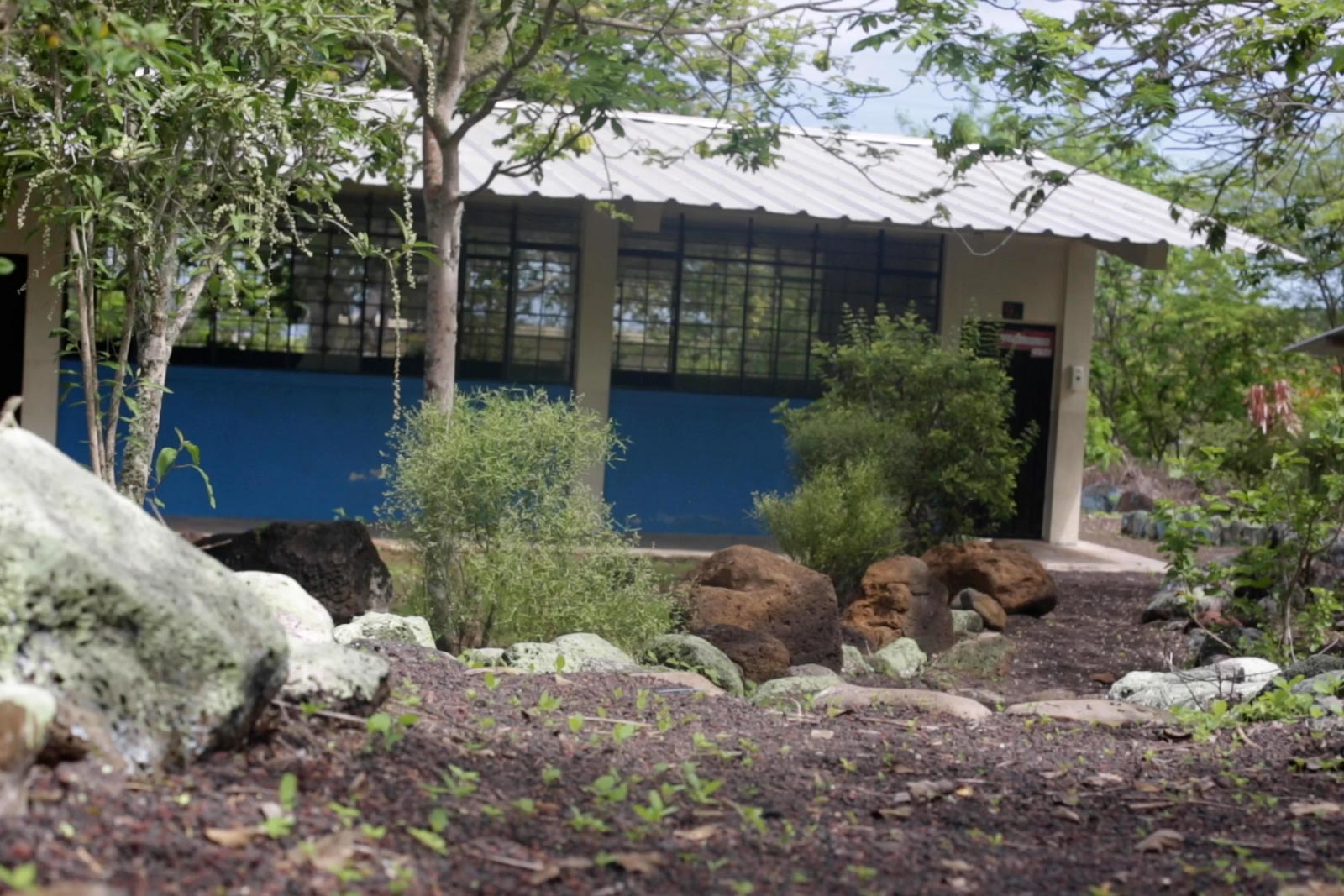
Even after a return to in-person teaching, students and teachers are still struggling to recover from the pandemic’s academic and emotional effects.
As was the case with noticing a lack of accessible places throughout the island, a foreigner like myself could make the connection quickly. Internet on the island is scarce.
Nearly two-thirds of the student body at Ignacio Hernandez classifies as low-income. Further, only 30% of the students have internet access at home, according to the school’s principal, Paola Quiroga.
This posed a problem for remote schooling.
“Those students needed to have a physical file in order to complete their tasks and homework,” said Quiroga. “That put a total imbalance because those who have the access to technology could have access to education and those that do not, they could not pass.”
Without access to the home through virtual learning, the school had little insight into how students were doing academically. And by extension, emotionally. Mendoza García, occasionally accompanied by Quiroga, started making home visits.
Domestic violence is common on the island which was only compounded by episodes of depression brought on by the pandemic. Many students found it difficult to stay on track with so many external factors blocking their success. Further, without internet, students heard bits and pieces of news regarding the pandemic leading them to fear the unknown, according to Quiroga.
Quiroga and Mendoza García started offering night classes to students who could not meet educational markers throughout the early months of the pandemic. That way, they could work and make a living on the island while completing their studies.
Mendoza García additionally extended his emotional support to parents. He worked to educate them on the importance of internet connection and emotional containment that could be improved on the homefront in order to promote student success at school.
While Mendoza García is an educator in the traditional sense, his role is ever-expanding. Emotional support was never at the forefront of his job description, but he’s learned student success includes strides on the emotional front as well.
Music is Medicine
Every weekend, the streets of San Cristóbal fill with the sounds of DJs’ and musicians playing traditional Latin dance music for both tourists and locals. But while music is a key to the culture of the island, there are very few opportunities for music education in the public schools.
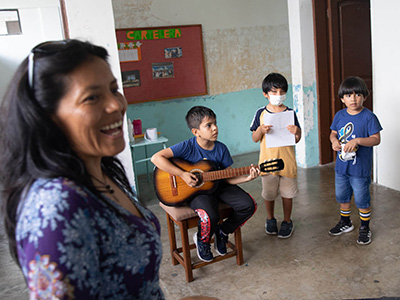
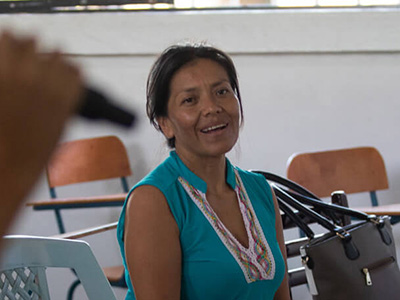
Young Girls Wear the Leggings
Across the street from a playground on San Cristóbal stands the remnants of a video game store. The storefront looks as if it still sells electronics, with a mural plastered to the side of the building and its gated front suggesting the owner is simply out-of-office. When golden hour strikes, Belén Vasquez raises the store’s garage door to a converted studio where she teaches a variety of dance to young women and girls.
Vasquez grew up in Quito but cherished childhood trips to the Galápagos. It was a paradise that brought tears to her eyes when it was time to go.
When she was 13, she and her family moved to San Cristóbal. Her grandfather helped establish one of the first banks on the island, allowing the family to attain residency. To her surprise, dance schools were non-existent. Dance had been a form of escapism for Vasquez as her father struggled with substance abuse and the family’s finances weren’t always guaranteed.
“I feel like art is the life jacket that gets you out of the water.”
“I felt that I always had to be very strong, because I am the oldest of five children, and I had to fight a lot for them,” said Vasquez. “I have been working since I was 16 years old. I had to leave my home and work for them. [In the Galápagos] everything is much easier and art was what helped me get ahead.”
After 10 years of working as a manager within Ecuador’s Ministry of Culture, the pandemic put projects on hold. She left the job to open her studio in October of last year. Now 41, Vasquez feels a responsibility to provide cultural lessons through dance.
“It seemed very selfish to deprive [people on the island] of that opportunity,” said Vasquez. “So I wanted to learn and teach everything I like to other people.”
In the afternoons, she invites young girls to her home where they learn how to paint, followed by belly dancing classes at Vasquez’s studio. In the evenings, she teaches older women a variety of dance forms – belly dancing like the young girls, in addition to tango and other types of dance native to Ecuador and elsewhere around the world. As they practice their form and technique in the mirror, the reflection shows punching bags behind them; Vasquez also teaches women how to box.
Despite the pay cut that came with leaving her government job, she finds her new role more satisfying.
“I’m still doing [arts and culture education] in a particular way,” said Vasquez. “But I do think that people should understand that it is just as important as having a math class, because it’s something that really isn’t just because it’s going to help you in the future, but because it’s a way of expressing and getting out everything you have inside.”
There’s more to her teaching than learning how to sway one’s hip to the beat of a song or stroke a canvas with a paintbrush.
I sat in on Vasquez’s class one afternoon in March, watching her young protégées rehearse a dance. The little girls practiced in matching turquoise costumes that a local dressmaker had sewn just for them. As they swung their hips in their fringed leggings – never quite to the tune of the music, always seeming to fall one count behind – it was clear Vasquez wasn’t training these girls to win competitions or become world-renown for their technique. She was instead teaching them to be proud of the person they saw in the mirror, building their self-esteem and confidence in the process.
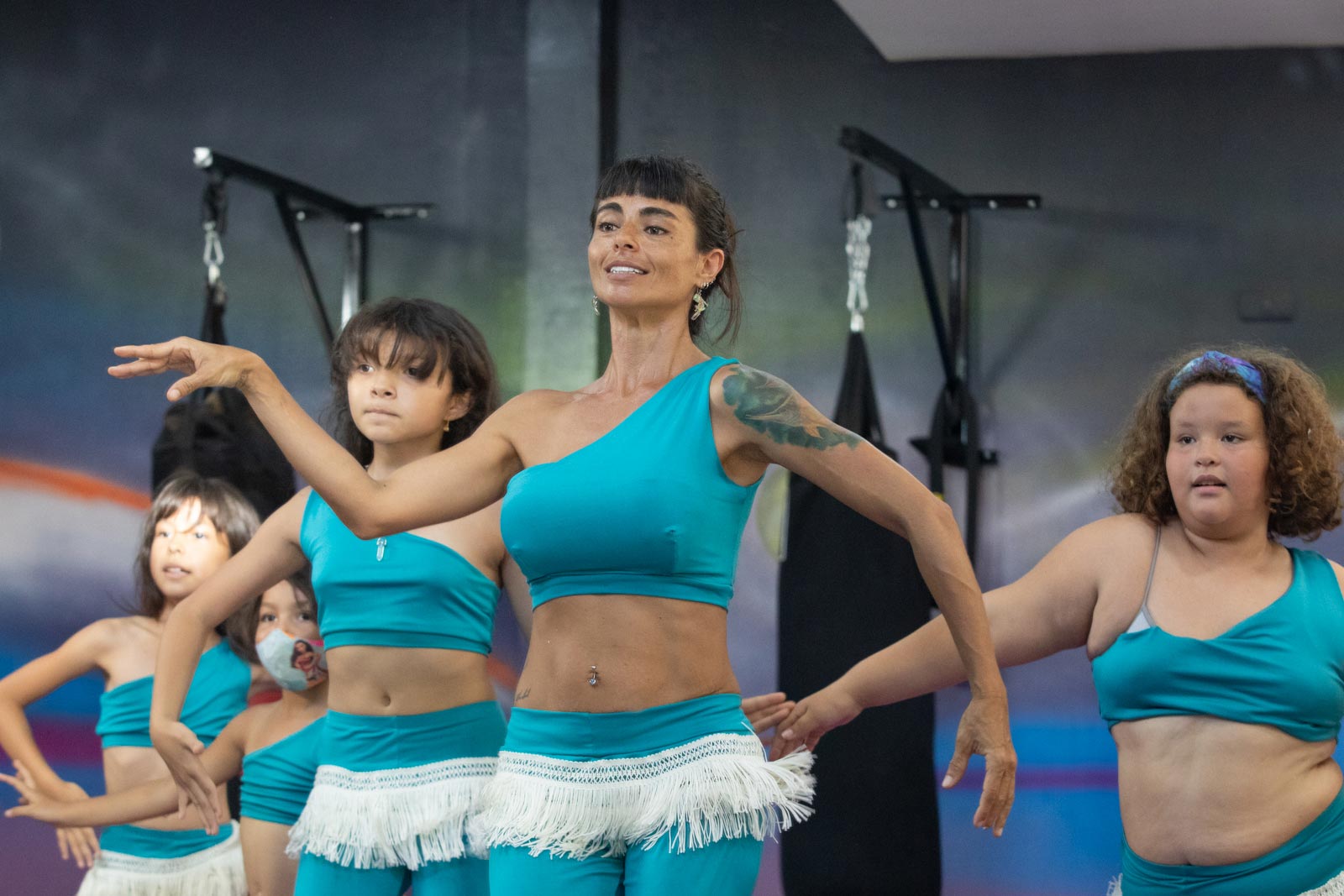
With a performance nearing, Belén leads a class of young girls in a dress rehearsal.
“The space is really designed for women, because there are not many spaces for women, very few,” said Vasquez. “We still live in a very macho place. Where the government has put many soccer courts, many volleyball courts and only men are gathered; women generally do not play any sports. It is done only for men and there are no spaces for women to motivate themselves.”
The lessons Vasquez teaches through her classes build a strong foundation for Galápagos youth: lessons a biweekly art class can’t quite parallel.
A Shift in Values
At the core of any educational system where students’ needs aren’t being met is a lack of resources. This proved true for Plaza when her son’s needs were written off; for Mendoza García when his role as student coordinator extended to that of student counselor; and for Vasquez when arts education wasn’t prioritized.
The stories of Plaza and Játiva, Mendoza García and Vasquez aren’t merely a product of limited resources. While additional funds might have incentivized Játiva’s teachers to go the extra mile to help him in class, or implement an arts program that promotes self-expression, it’s the values these educators have found in their individual efforts that a traditional education system can’t seem to offer.
Plaza has encouraged other parents of disabled children to know their rights through her role as president of the United Hearts Association – Asociación de Corazones Unidos. Mendoza García, alongside his colleagues at Ignacio Hernandez, has elevated the importance of student emotional health to that of academic intelligence. Vasquez has provided young girls a space where they not only learn unique dances, but more importantly develop thick skin in the process.
Plaza, Mendoza García and Vasquez are filling the gaps in San Cristóbal’s educational system – gaps some have never had to leap over until now.

